Business Communication Environmental - PDF
VerifiedAdded on 2021/05/31
|16
|840
|26
Presentation
AI Summary
Contribute Materials
Your contribution can guide someone’s learning journey. Share your
documents today.
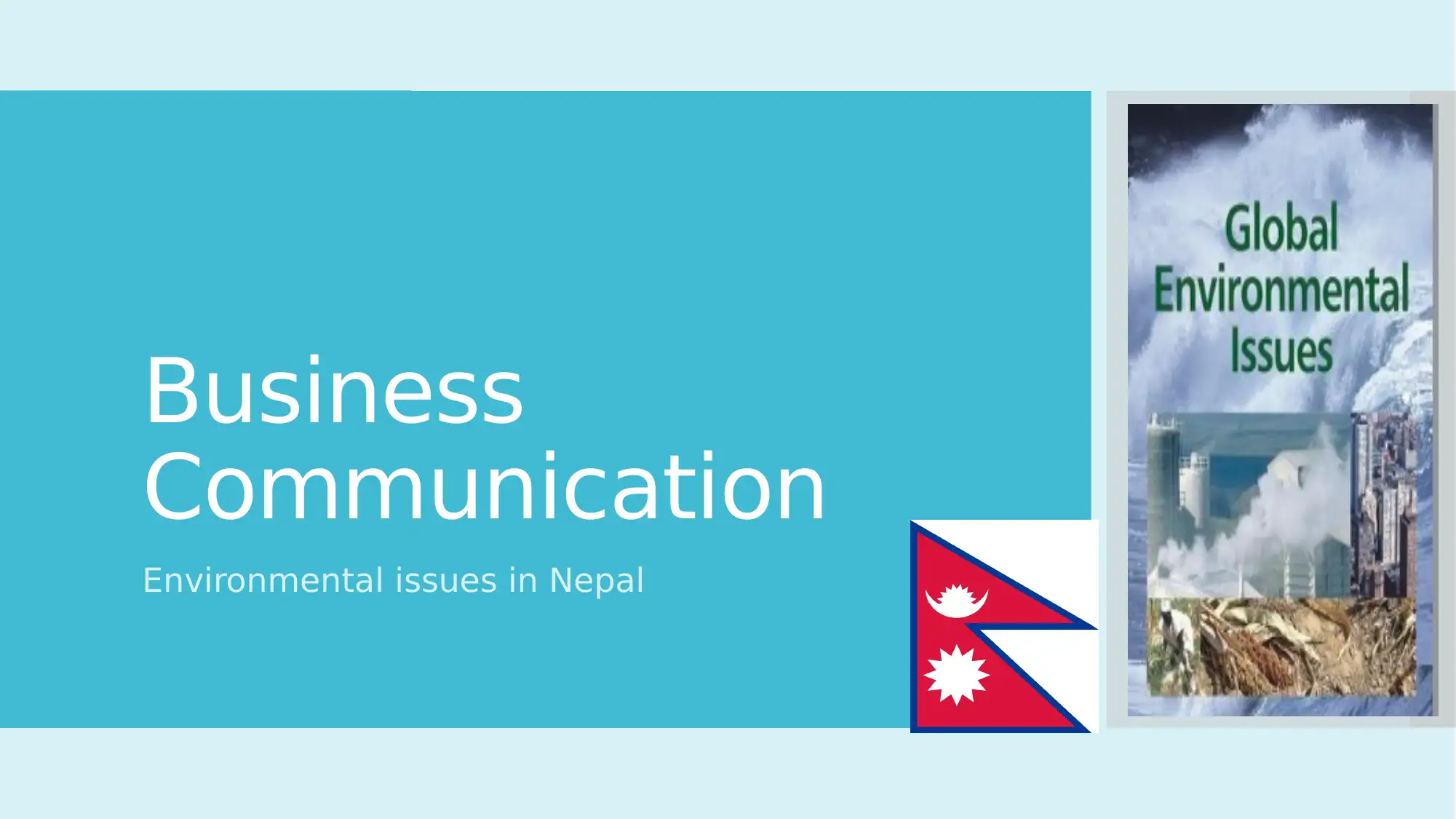
Business
Communication
Environmental issues in Nepal
Communication
Environmental issues in Nepal
Secure Best Marks with AI Grader
Need help grading? Try our AI Grader for instant feedback on your assignments.
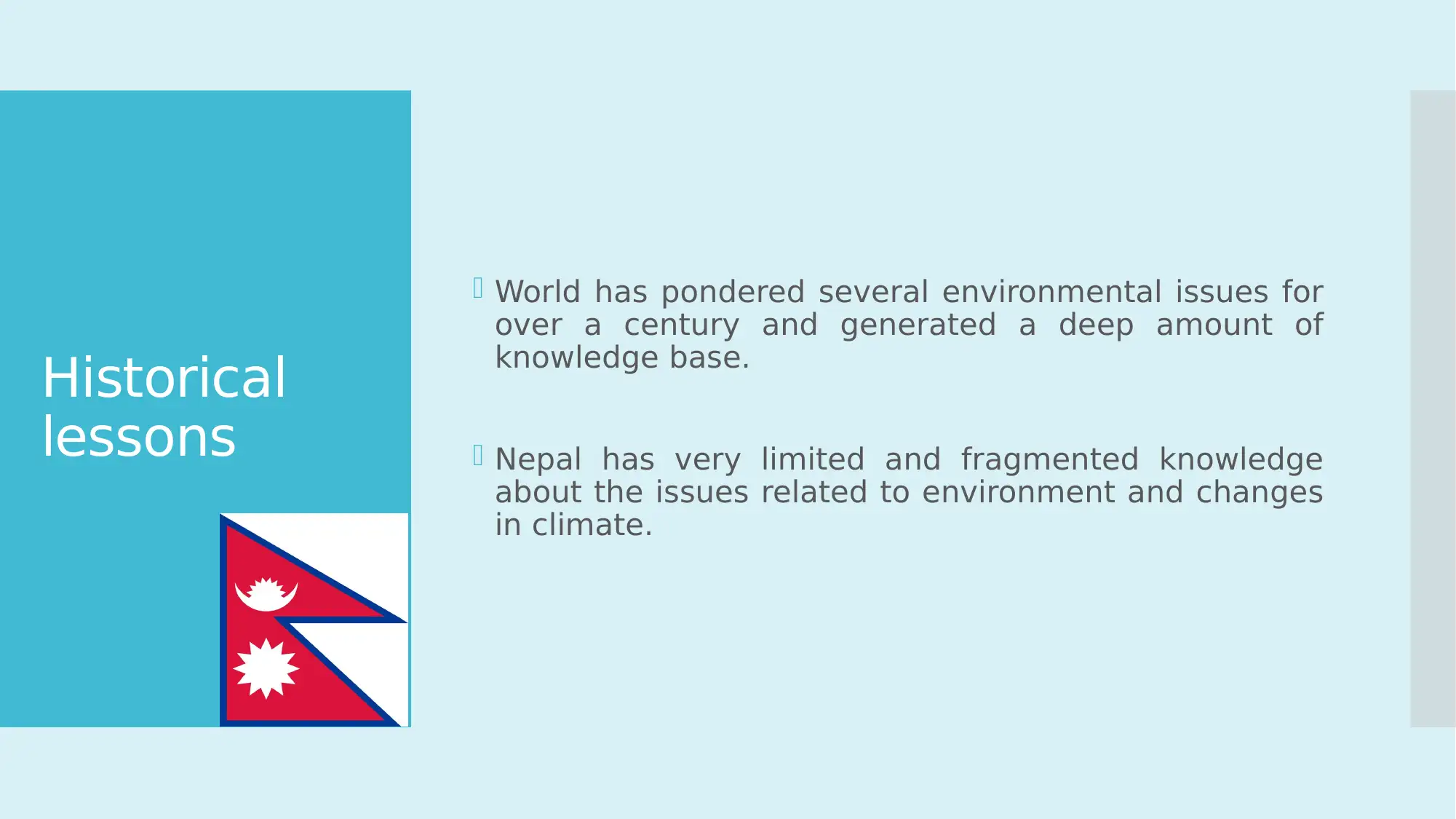
Historical
lessons
World has pondered several environmental issues for
over a century and generated a deep amount of
knowledge base.
Nepal has very limited and fragmented knowledge
about the issues related to environment and changes
in climate.
lessons
World has pondered several environmental issues for
over a century and generated a deep amount of
knowledge base.
Nepal has very limited and fragmented knowledge
about the issues related to environment and changes
in climate.
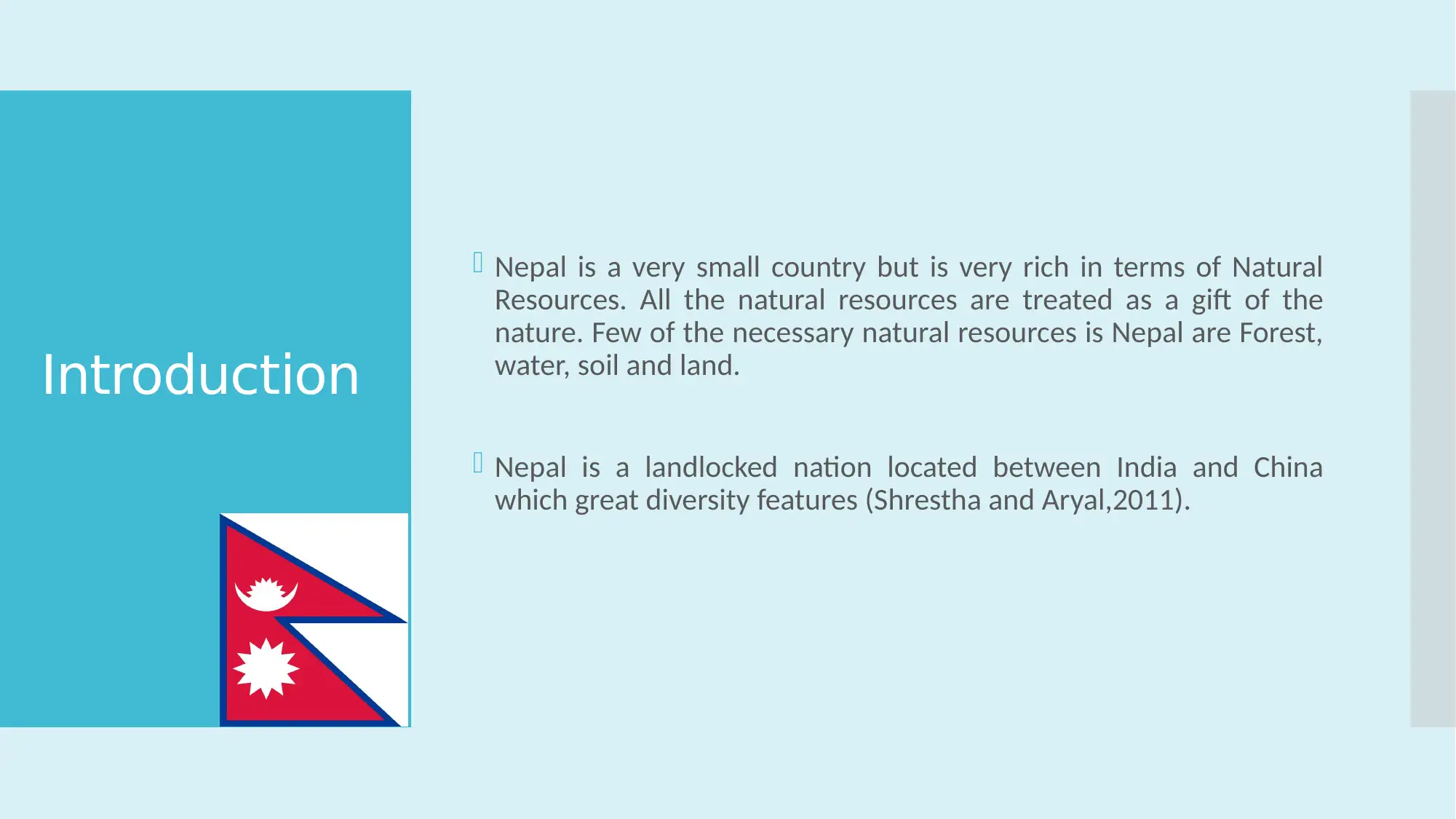
Introduction
Nepal is a very small country but is very rich in terms of Natural
Resources. All the natural resources are treated as a gift of the
nature. Few of the necessary natural resources is Nepal are Forest,
water, soil and land.
Nepal is a landlocked nation located between India and China
which great diversity features (Shrestha and Aryal,2011).
Nepal is a very small country but is very rich in terms of Natural
Resources. All the natural resources are treated as a gift of the
nature. Few of the necessary natural resources is Nepal are Forest,
water, soil and land.
Nepal is a landlocked nation located between India and China
which great diversity features (Shrestha and Aryal,2011).
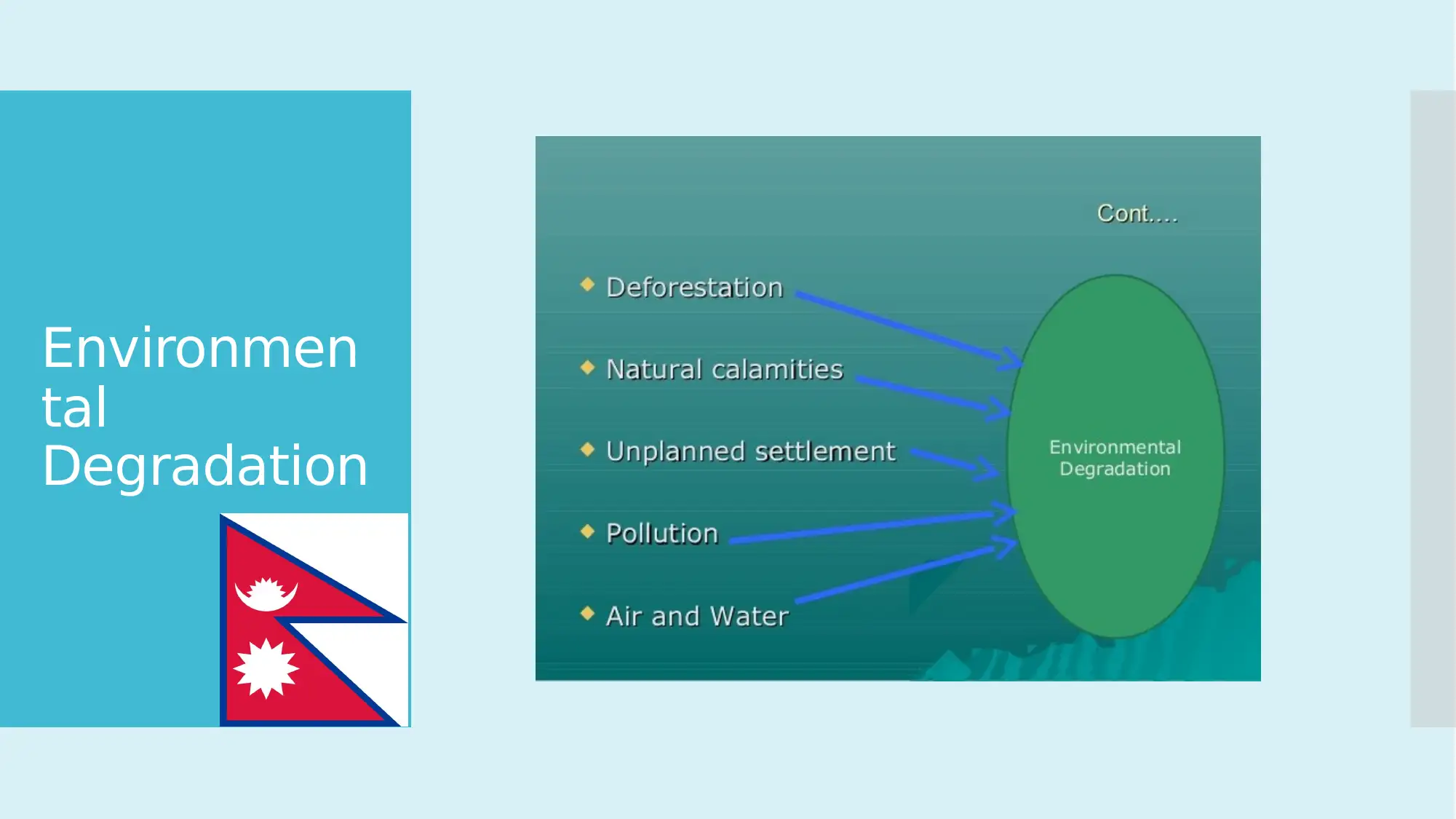
Environmen
tal
Degradation
tal
Degradation
Secure Best Marks with AI Grader
Need help grading? Try our AI Grader for instant feedback on your assignments.
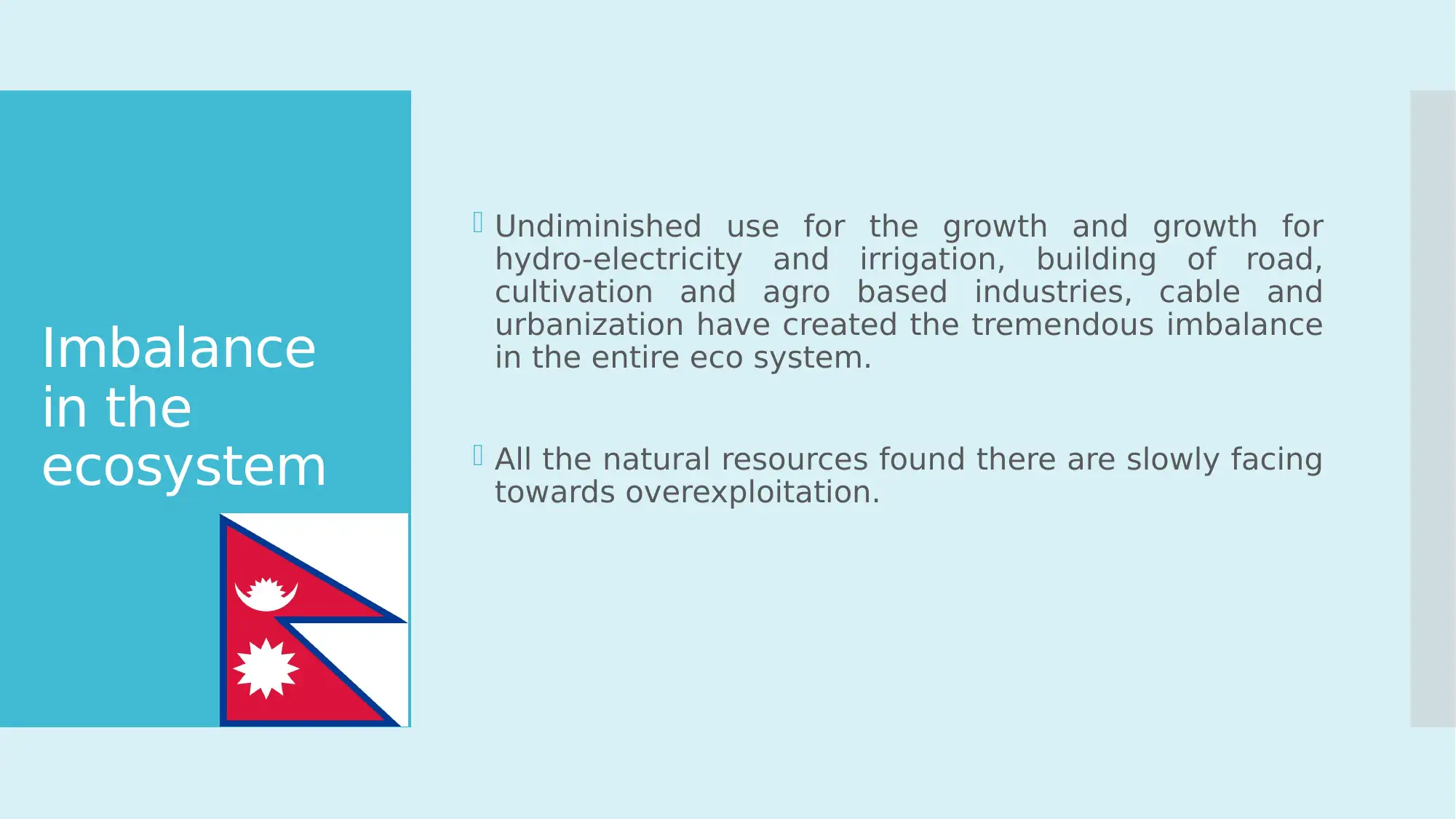
Imbalance
in the
ecosystem
Undiminished use for the growth and growth for
hydro-electricity and irrigation, building of road,
cultivation and agro based industries, cable and
urbanization have created the tremendous imbalance
in the entire eco system.
All the natural resources found there are slowly facing
towards overexploitation.
in the
ecosystem
Undiminished use for the growth and growth for
hydro-electricity and irrigation, building of road,
cultivation and agro based industries, cable and
urbanization have created the tremendous imbalance
in the entire eco system.
All the natural resources found there are slowly facing
towards overexploitation.
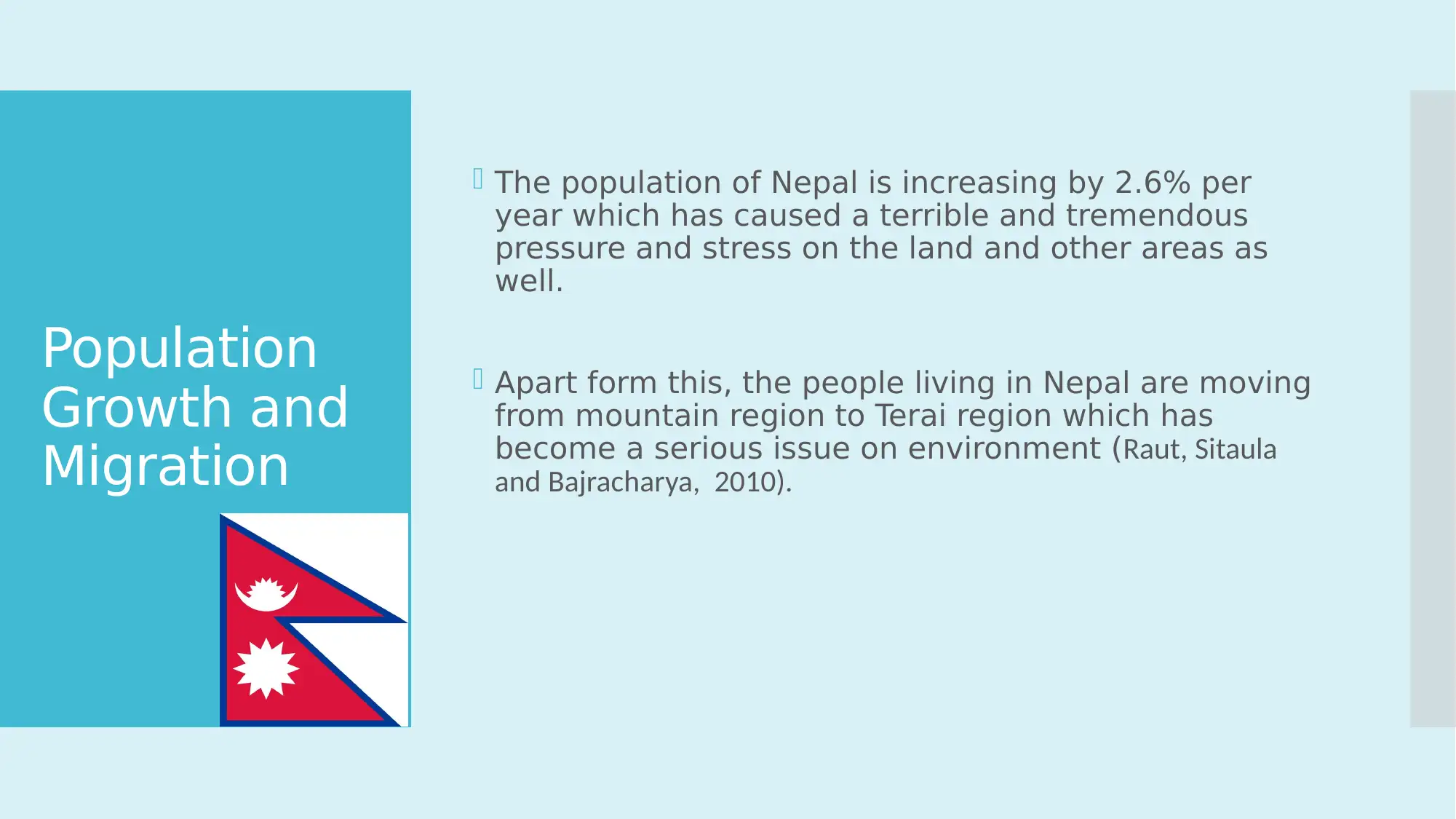
Population
Growth and
Migration
The population of Nepal is increasing by 2.6% per
year which has caused a terrible and tremendous
pressure and stress on the land and other areas as
well.
Apart form this, the people living in Nepal are moving
from mountain region to Terai region which has
become a serious issue on environment (Raut, Sitaula
and Bajracharya, 2010).
Growth and
Migration
The population of Nepal is increasing by 2.6% per
year which has caused a terrible and tremendous
pressure and stress on the land and other areas as
well.
Apart form this, the people living in Nepal are moving
from mountain region to Terai region which has
become a serious issue on environment (Raut, Sitaula
and Bajracharya, 2010).
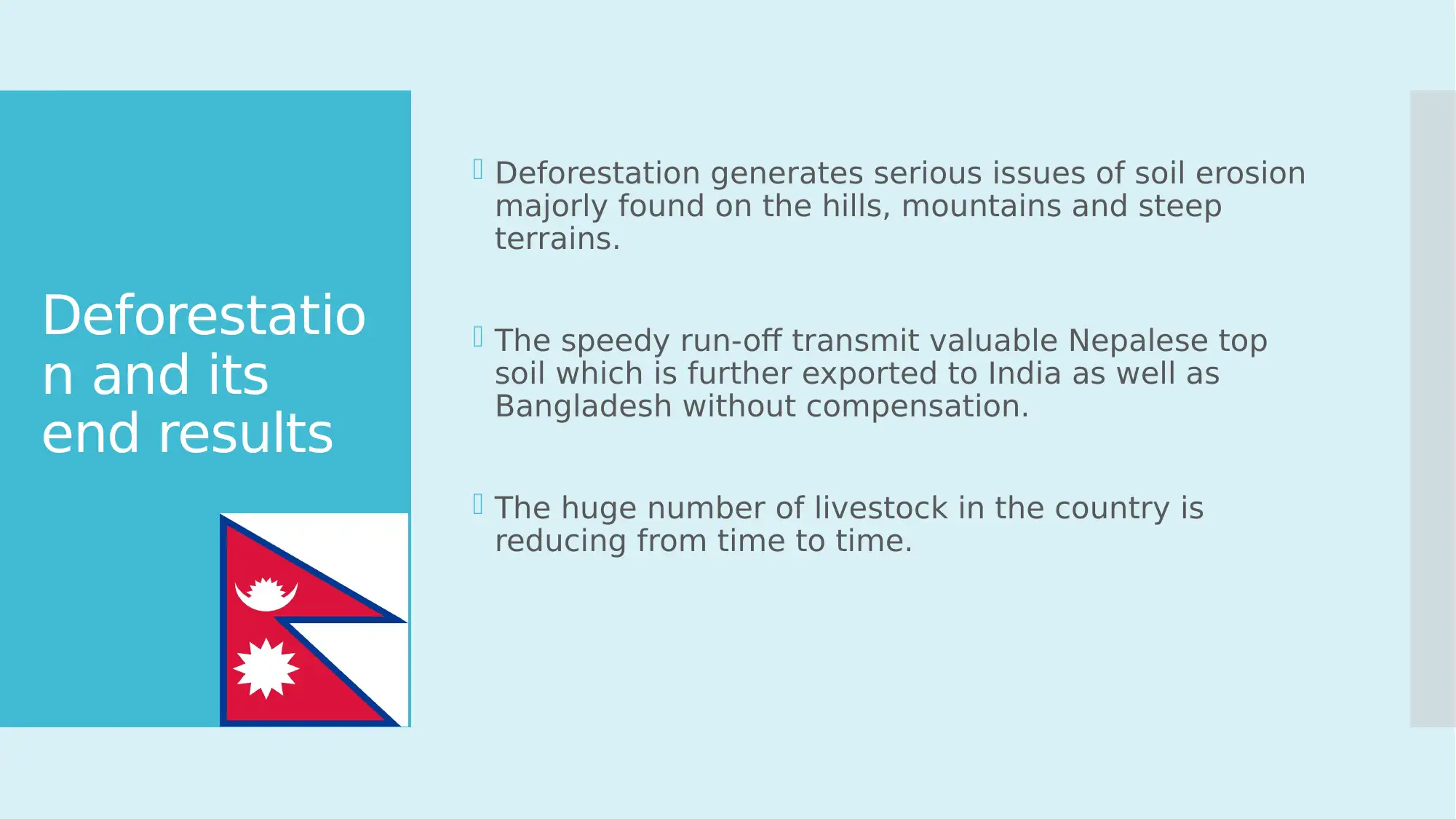
Deforestatio
n and its
end results
Deforestation generates serious issues of soil erosion
majorly found on the hills, mountains and steep
terrains.
The speedy run-off transmit valuable Nepalese top
soil which is further exported to India as well as
Bangladesh without compensation.
The huge number of livestock in the country is
reducing from time to time.
n and its
end results
Deforestation generates serious issues of soil erosion
majorly found on the hills, mountains and steep
terrains.
The speedy run-off transmit valuable Nepalese top
soil which is further exported to India as well as
Bangladesh without compensation.
The huge number of livestock in the country is
reducing from time to time.
Paraphrase This Document
Need a fresh take? Get an instant paraphrase of this document with our AI Paraphraser
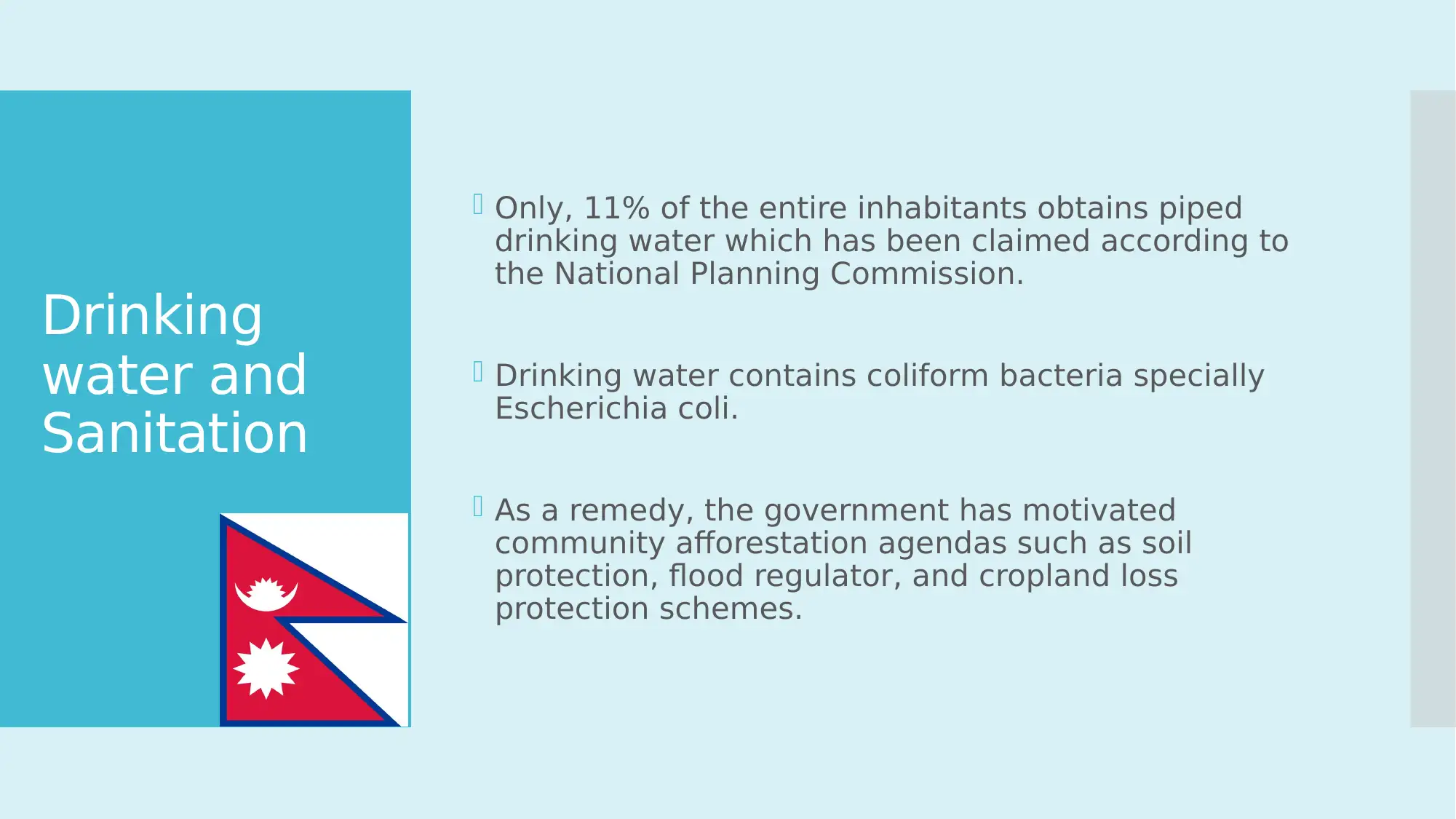
Drinking
water and
Sanitation
Only, 11% of the entire inhabitants obtains piped
drinking water which has been claimed according to
the National Planning Commission.
Drinking water contains coliform bacteria specially
Escherichia coli.
As a remedy, the government has motivated
community afforestation agendas such as soil
protection, flood regulator, and cropland loss
protection schemes.
water and
Sanitation
Only, 11% of the entire inhabitants obtains piped
drinking water which has been claimed according to
the National Planning Commission.
Drinking water contains coliform bacteria specially
Escherichia coli.
As a remedy, the government has motivated
community afforestation agendas such as soil
protection, flood regulator, and cropland loss
protection schemes.
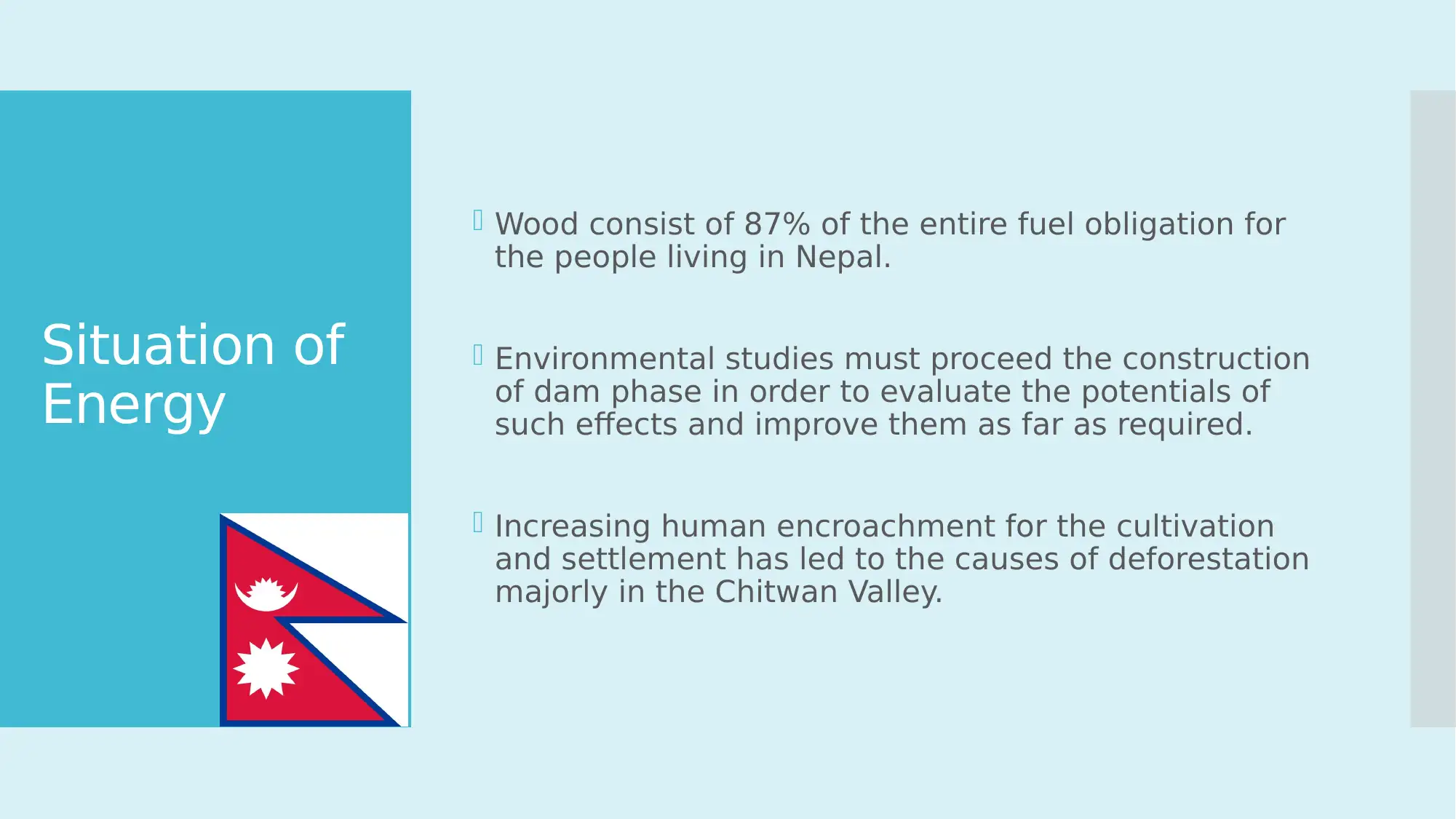
Situation of
Energy
Wood consist of 87% of the entire fuel obligation for
the people living in Nepal.
Environmental studies must proceed the construction
of dam phase in order to evaluate the potentials of
such effects and improve them as far as required.
Increasing human encroachment for the cultivation
and settlement has led to the causes of deforestation
majorly in the Chitwan Valley.
Energy
Wood consist of 87% of the entire fuel obligation for
the people living in Nepal.
Environmental studies must proceed the construction
of dam phase in order to evaluate the potentials of
such effects and improve them as far as required.
Increasing human encroachment for the cultivation
and settlement has led to the causes of deforestation
majorly in the Chitwan Valley.
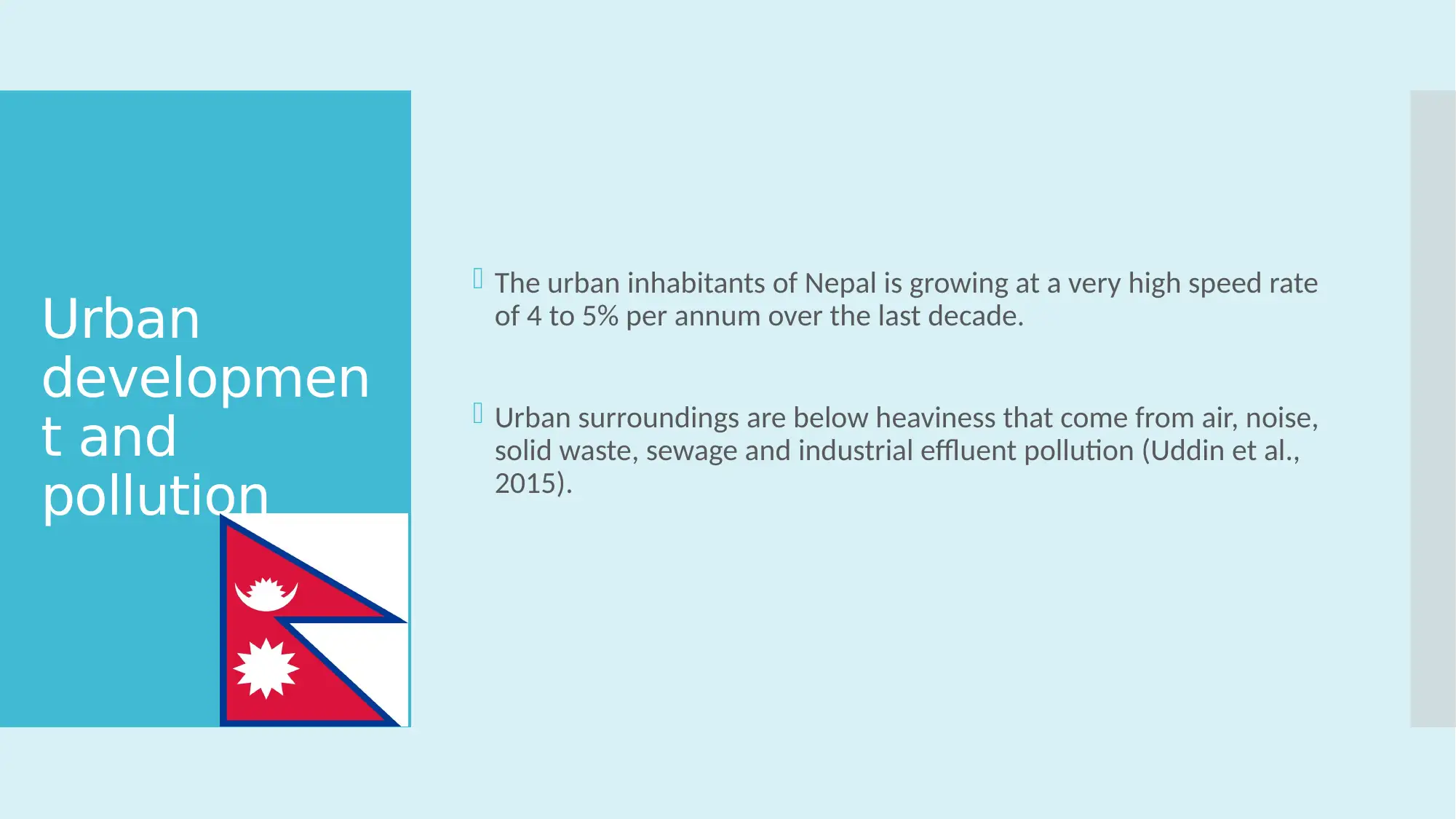
Urban
developmen
t and
pollution
The urban inhabitants of Nepal is growing at a very high speed rate
of 4 to 5% per annum over the last decade.
Urban surroundings are below heaviness that come from air, noise,
solid waste, sewage and industrial effluent pollution (Uddin et al.,
2015).
developmen
t and
pollution
The urban inhabitants of Nepal is growing at a very high speed rate
of 4 to 5% per annum over the last decade.
Urban surroundings are below heaviness that come from air, noise,
solid waste, sewage and industrial effluent pollution (Uddin et al.,
2015).
Secure Best Marks with AI Grader
Need help grading? Try our AI Grader for instant feedback on your assignments.
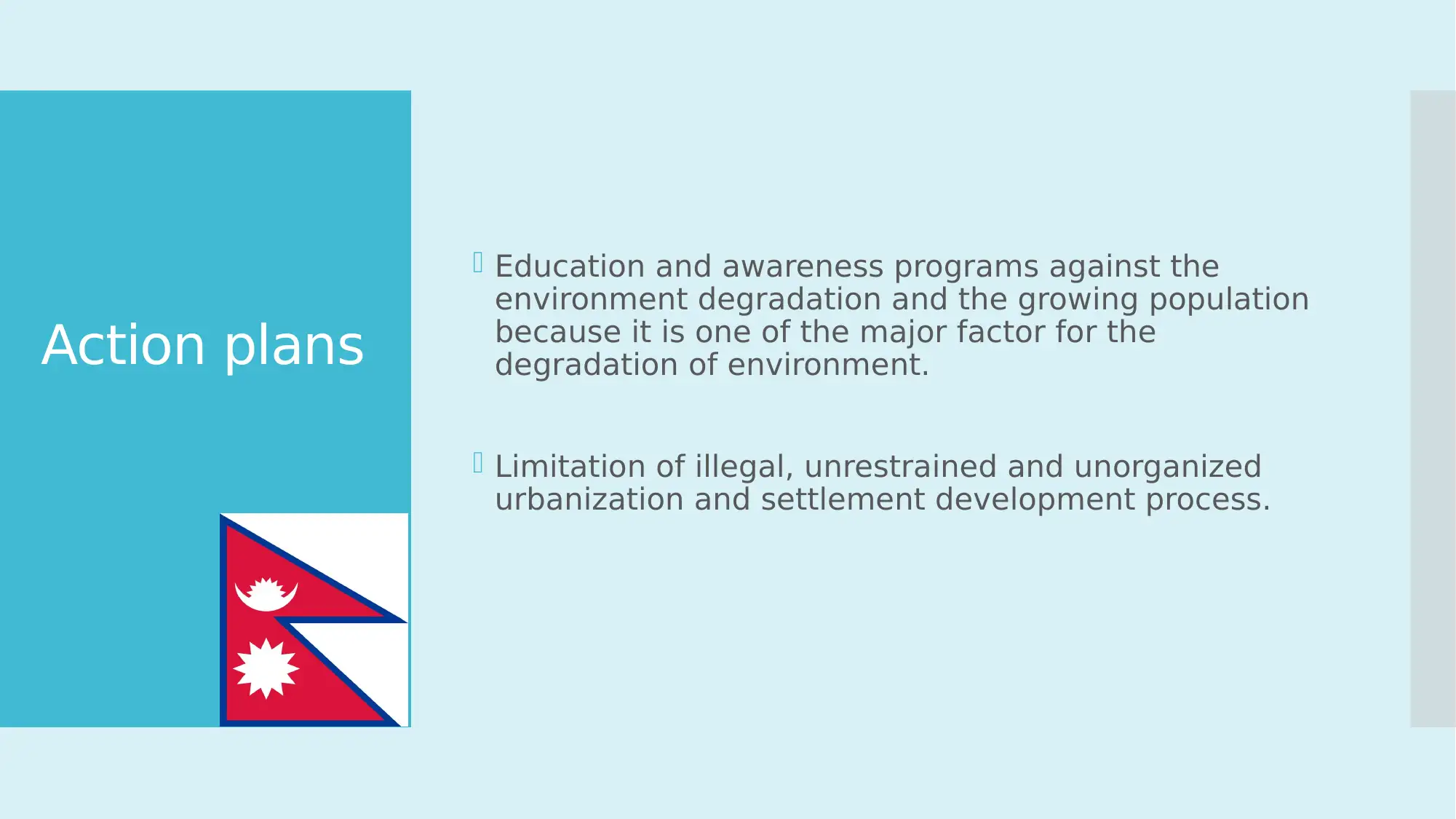
Action plans
Education and awareness programs against the
environment degradation and the growing population
because it is one of the major factor for the
degradation of environment.
Limitation of illegal, unrestrained and unorganized
urbanization and settlement development process.
Education and awareness programs against the
environment degradation and the growing population
because it is one of the major factor for the
degradation of environment.
Limitation of illegal, unrestrained and unorganized
urbanization and settlement development process.
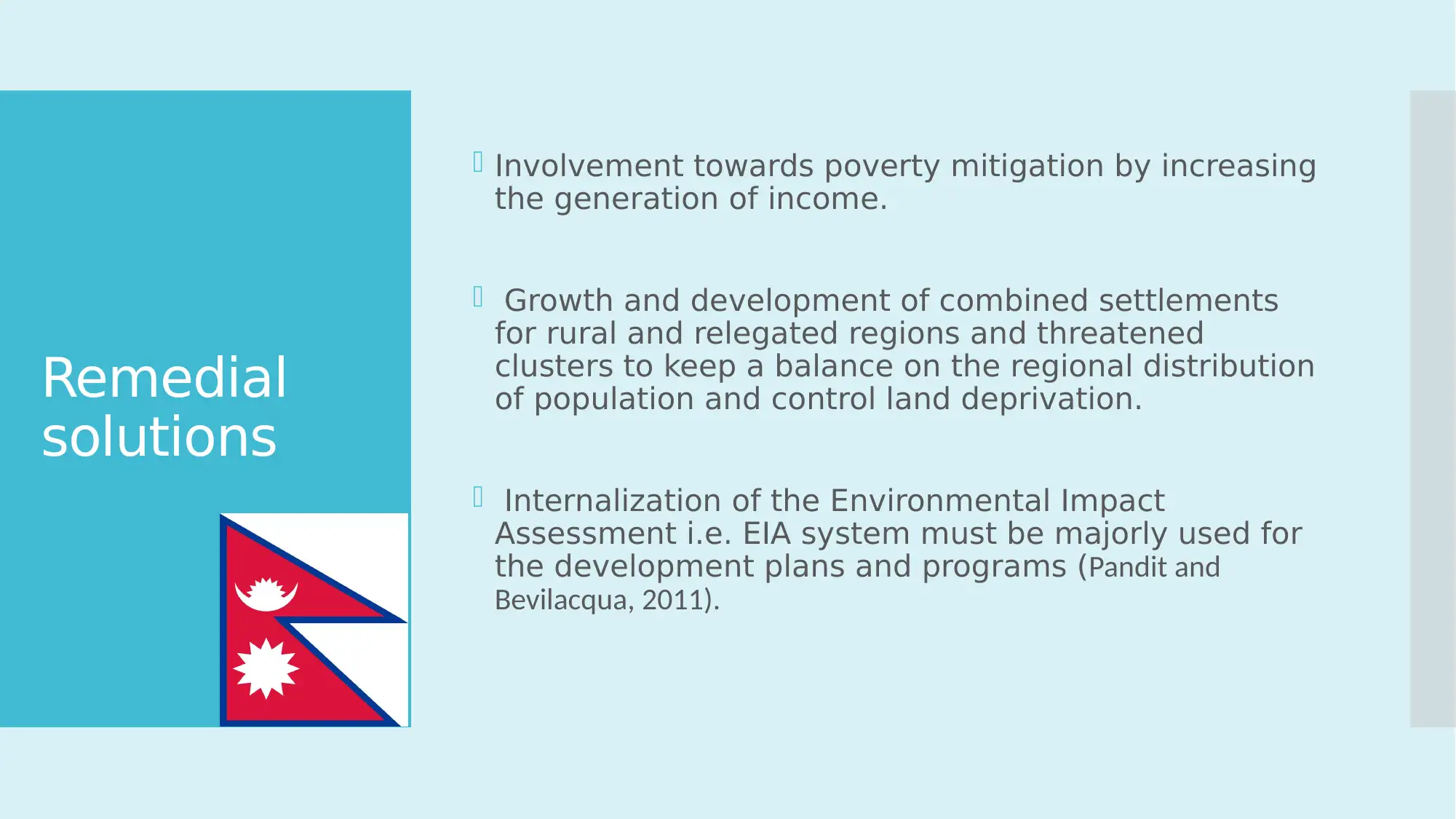
Remedial
solutions
Involvement towards poverty mitigation by increasing
the generation of income.
Growth and development of combined settlements
for rural and relegated regions and threatened
clusters to keep a balance on the regional distribution
of population and control land deprivation.
Internalization of the Environmental Impact
Assessment i.e. EIA system must be majorly used for
the development plans and programs (Pandit and
Bevilacqua, 2011).
solutions
Involvement towards poverty mitigation by increasing
the generation of income.
Growth and development of combined settlements
for rural and relegated regions and threatened
clusters to keep a balance on the regional distribution
of population and control land deprivation.
Internalization of the Environmental Impact
Assessment i.e. EIA system must be majorly used for
the development plans and programs (Pandit and
Bevilacqua, 2011).

Quick facts
Paraphrase This Document
Need a fresh take? Get an instant paraphrase of this document with our AI Paraphraser
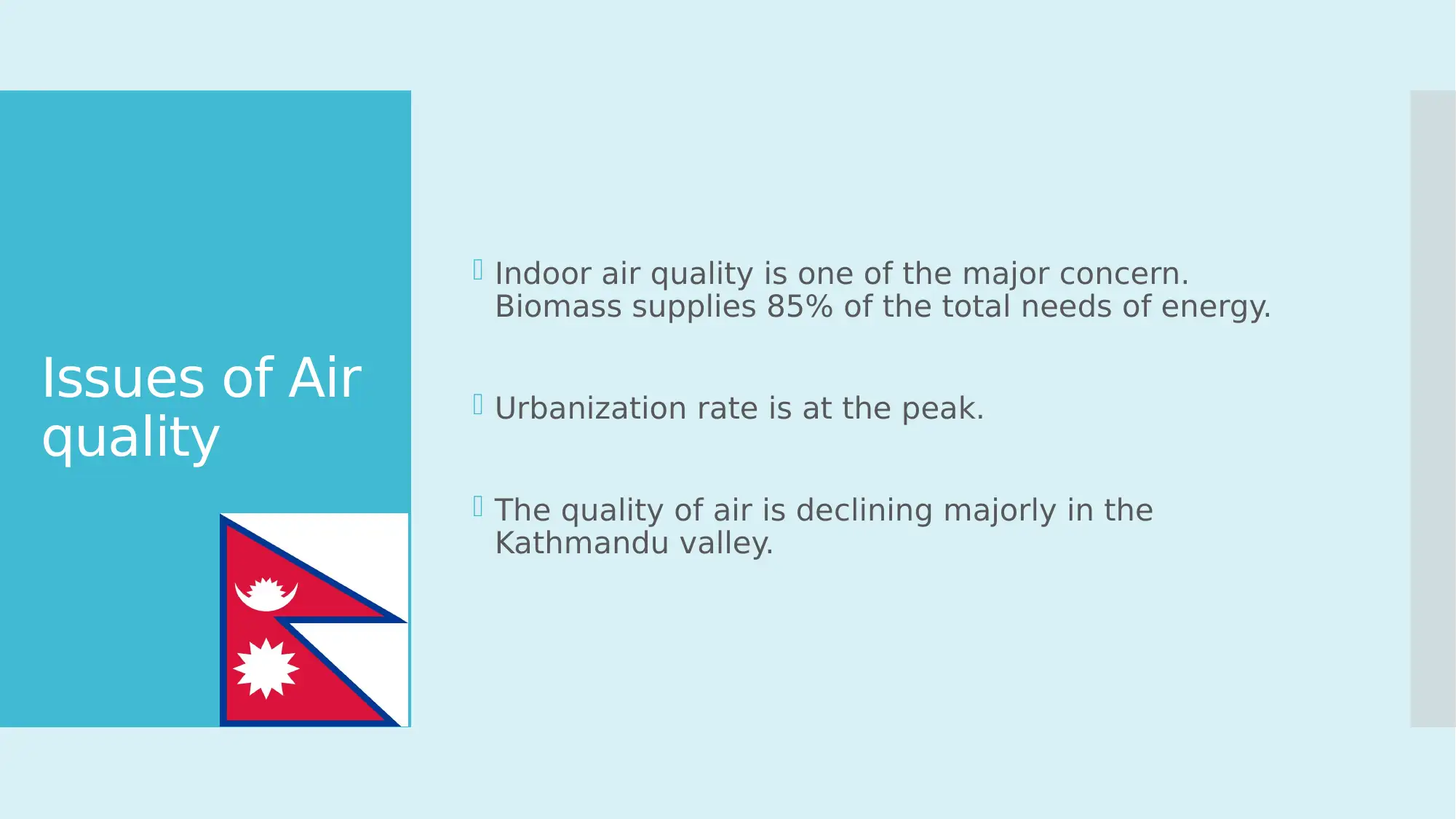
Issues of Air
quality
Indoor air quality is one of the major concern.
Biomass supplies 85% of the total needs of energy.
Urbanization rate is at the peak.
The quality of air is declining majorly in the
Kathmandu valley.
quality
Indoor air quality is one of the major concern.
Biomass supplies 85% of the total needs of energy.
Urbanization rate is at the peak.
The quality of air is declining majorly in the
Kathmandu valley.
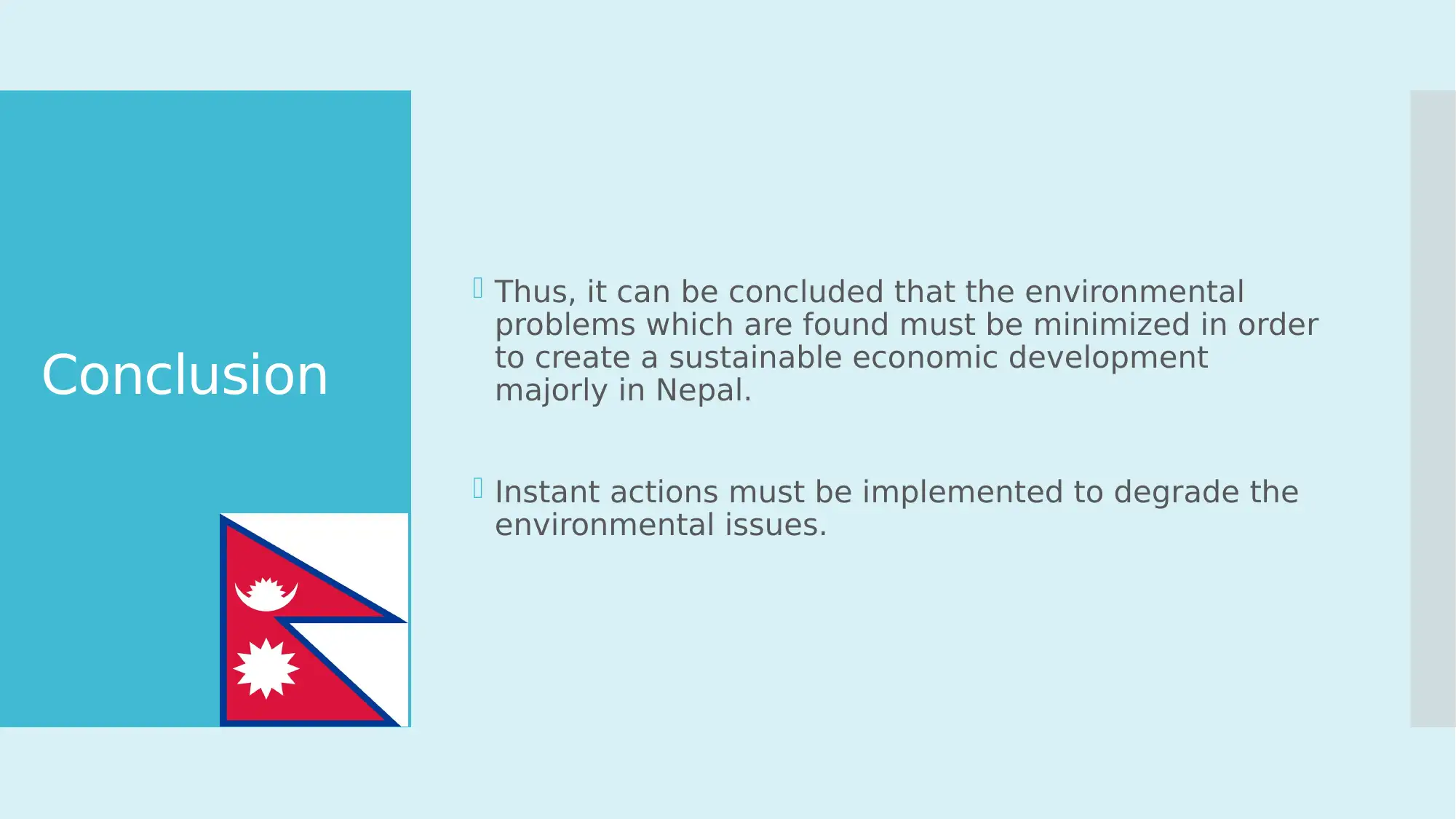
Conclusion
Thus, it can be concluded that the environmental
problems which are found must be minimized in order
to create a sustainable economic development
majorly in Nepal.
Instant actions must be implemented to degrade the
environmental issues.
Thus, it can be concluded that the environmental
problems which are found must be minimized in order
to create a sustainable economic development
majorly in Nepal.
Instant actions must be implemented to degrade the
environmental issues.
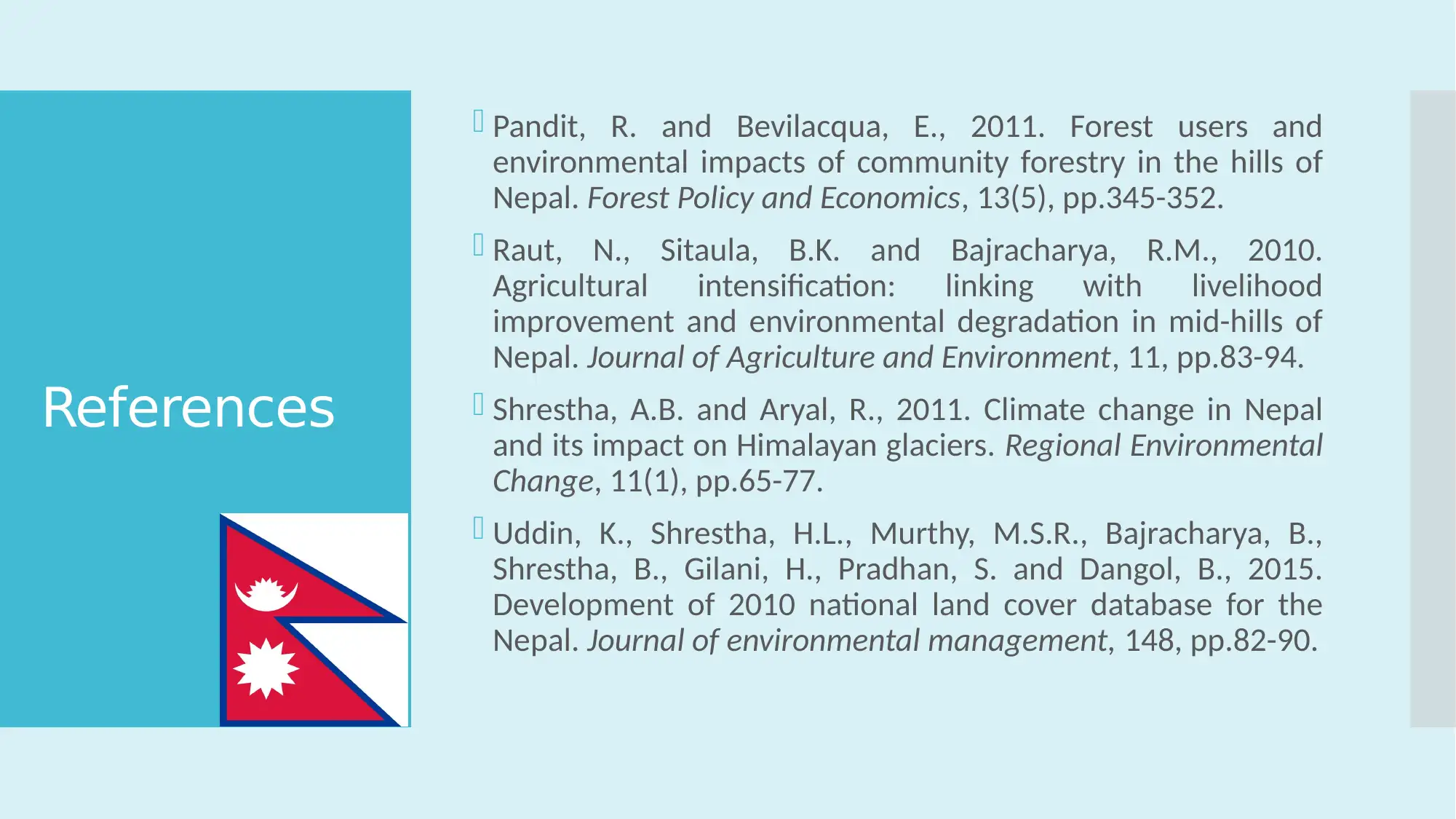
References
Pandit, R. and Bevilacqua, E., 2011. Forest users and
environmental impacts of community forestry in the hills of
Nepal. Forest Policy and Economics, 13(5), pp.345-352.
Raut, N., Sitaula, B.K. and Bajracharya, R.M., 2010.
Agricultural intensification: linking with livelihood
improvement and environmental degradation in mid-hills of
Nepal. Journal of Agriculture and Environment, 11, pp.83-94.
Shrestha, A.B. and Aryal, R., 2011. Climate change in Nepal
and its impact on Himalayan glaciers. Regional Environmental
Change, 11(1), pp.65-77.
Uddin, K., Shrestha, H.L., Murthy, M.S.R., Bajracharya, B.,
Shrestha, B., Gilani, H., Pradhan, S. and Dangol, B., 2015.
Development of 2010 national land cover database for the
Nepal. Journal of environmental management, 148, pp.82-90.
Pandit, R. and Bevilacqua, E., 2011. Forest users and
environmental impacts of community forestry in the hills of
Nepal. Forest Policy and Economics, 13(5), pp.345-352.
Raut, N., Sitaula, B.K. and Bajracharya, R.M., 2010.
Agricultural intensification: linking with livelihood
improvement and environmental degradation in mid-hills of
Nepal. Journal of Agriculture and Environment, 11, pp.83-94.
Shrestha, A.B. and Aryal, R., 2011. Climate change in Nepal
and its impact on Himalayan glaciers. Regional Environmental
Change, 11(1), pp.65-77.
Uddin, K., Shrestha, H.L., Murthy, M.S.R., Bajracharya, B.,
Shrestha, B., Gilani, H., Pradhan, S. and Dangol, B., 2015.
Development of 2010 national land cover database for the
Nepal. Journal of environmental management, 148, pp.82-90.
1 out of 16
Related Documents
Your All-in-One AI-Powered Toolkit for Academic Success.
+13062052269
info@desklib.com
Available 24*7 on WhatsApp / Email
![[object Object]](/_next/static/media/star-bottom.7253800d.svg)
Unlock your academic potential
© 2024 | Zucol Services PVT LTD | All rights reserved.





